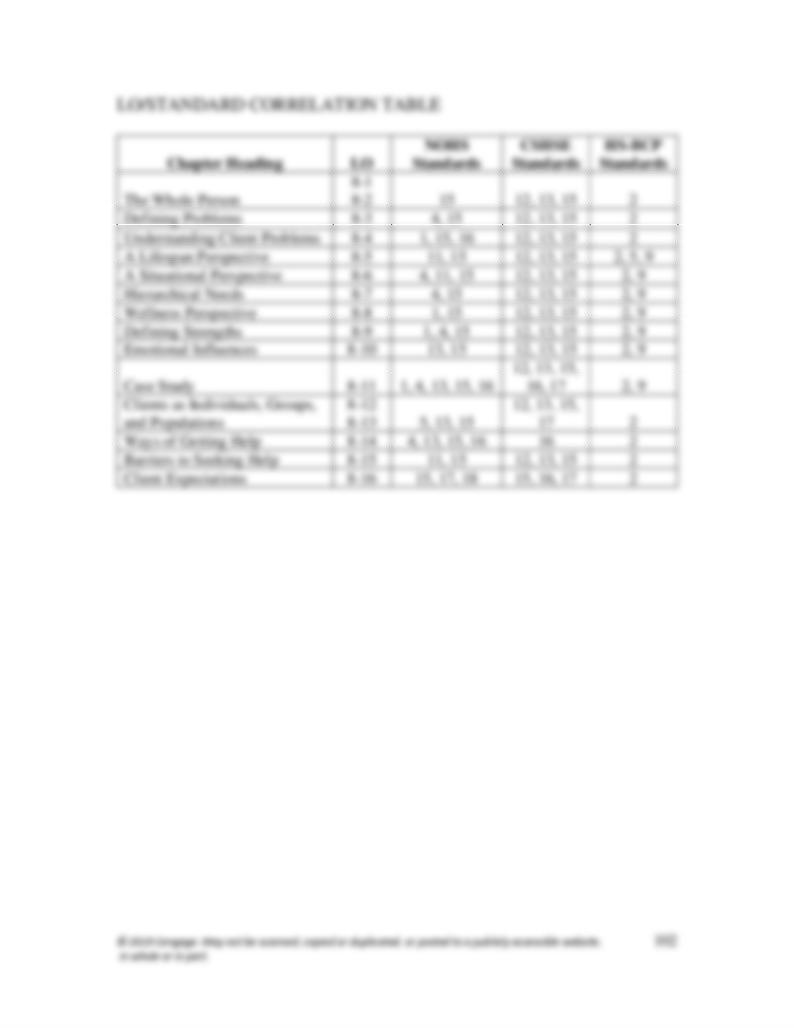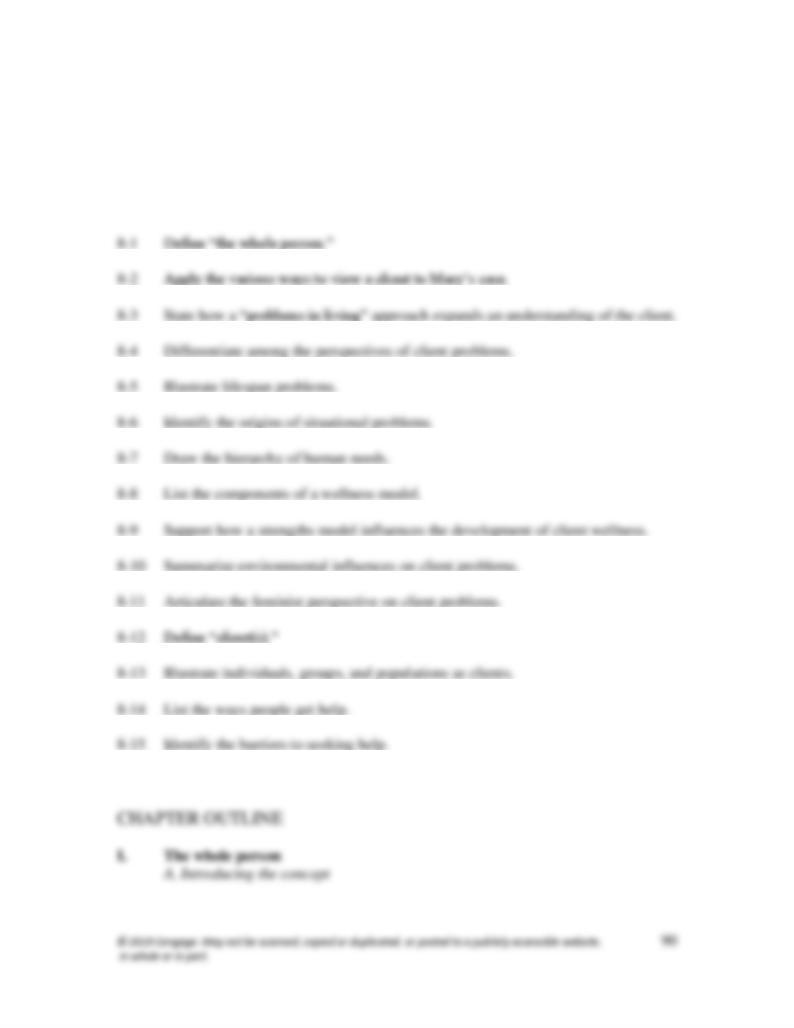
CHAPTER 8
THE CLIENT
LEARNING OBJECTIVES
After reading this chapter, students will be able to:
8-16 Summarize the influence of client expectations on the helping process.
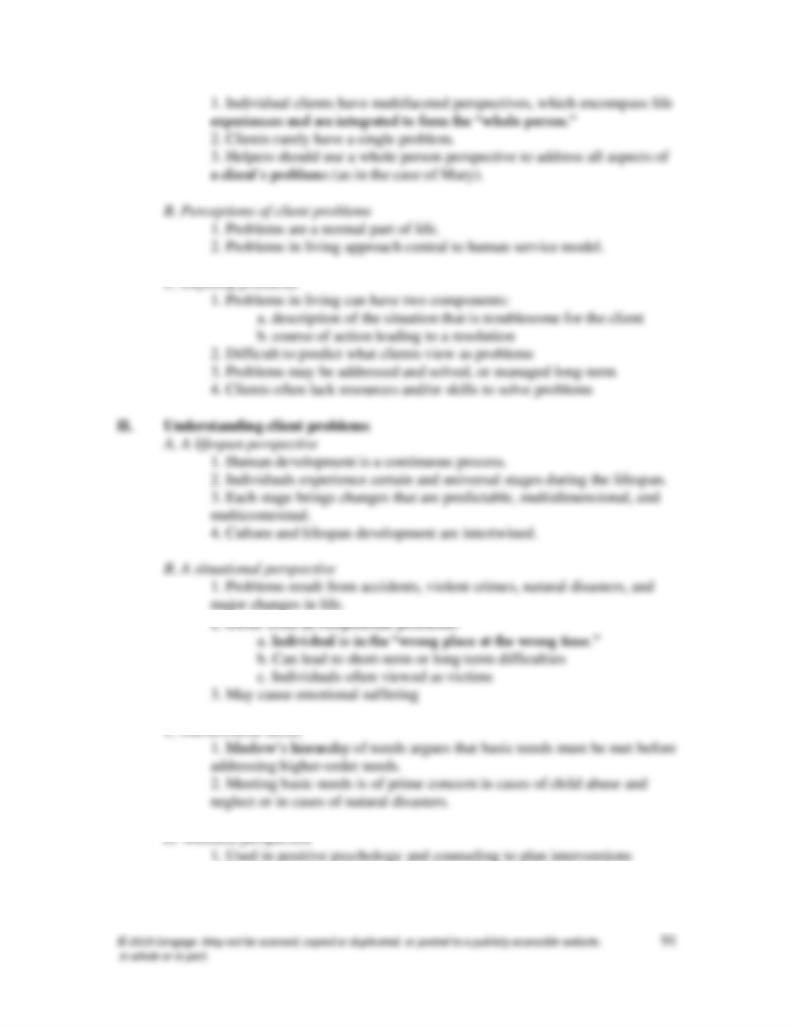
2. Helpers can use the indivisible self-model to try to understand clients.
a. Based on a holistic and strengths approach
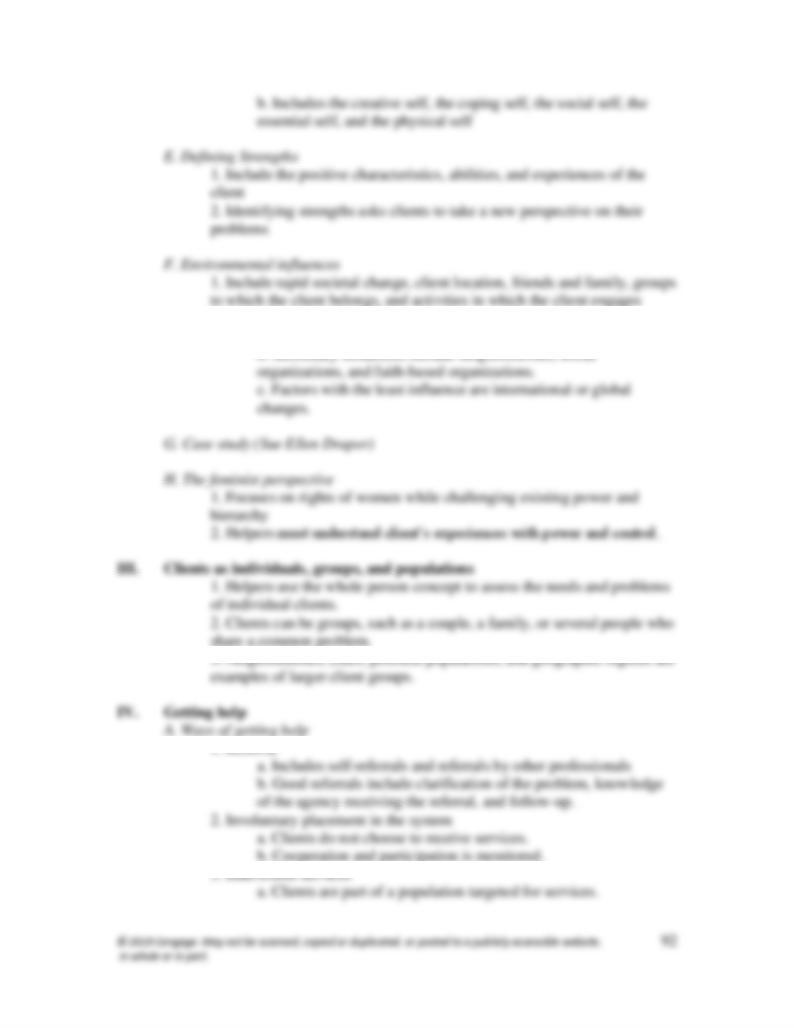
2. Consider a client’s environment in layers:
a. Factors closest to the client have primary impact (family).
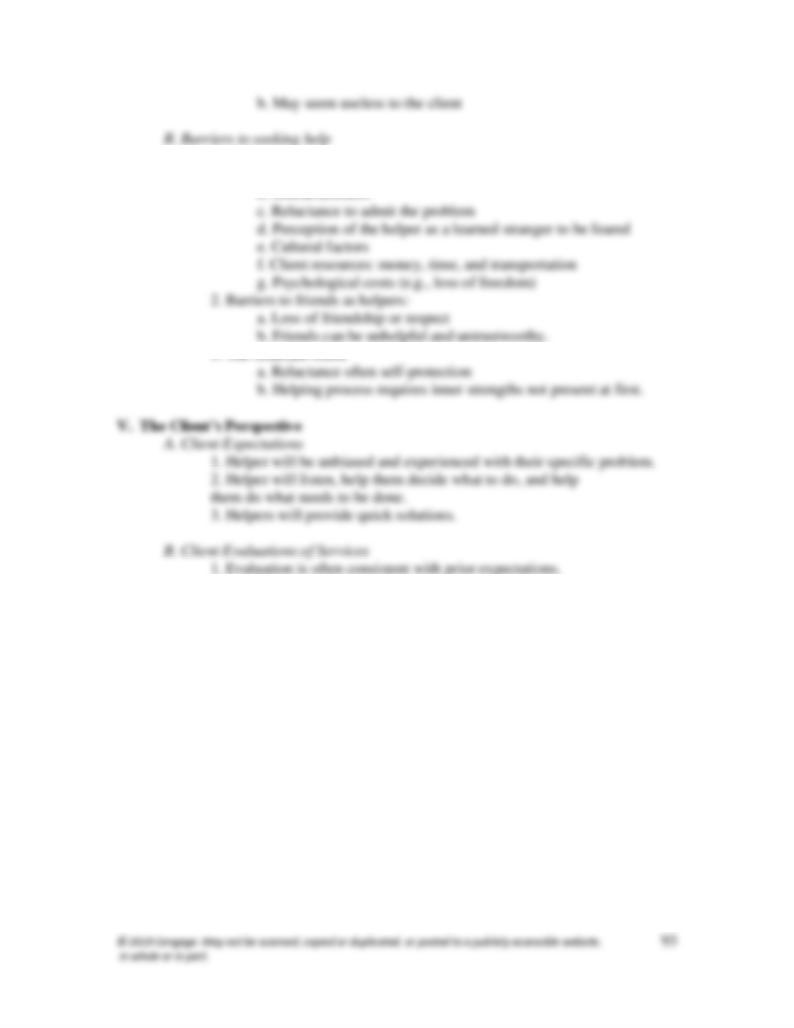
1. Barriers to professional help:
a. How the client views the problem (e.g., too difficult to solve)
2. Satisfied clients perceive the helper positively, participate in the helping
process, have their problems solved in the “right” amount of time, and
experience a supportive environment.
CHAPTER SUMMARY
Chapter Eight explores the client, the recipient of the human service process.
Problems in living are a normal part of human life. When clients have troubling
experiences and lack the resources or skills to solve these problems themselves, they
often seek the help of human service professionals. Because clients typically have
multiple problems and because clients have multifaceted perspectives from their life
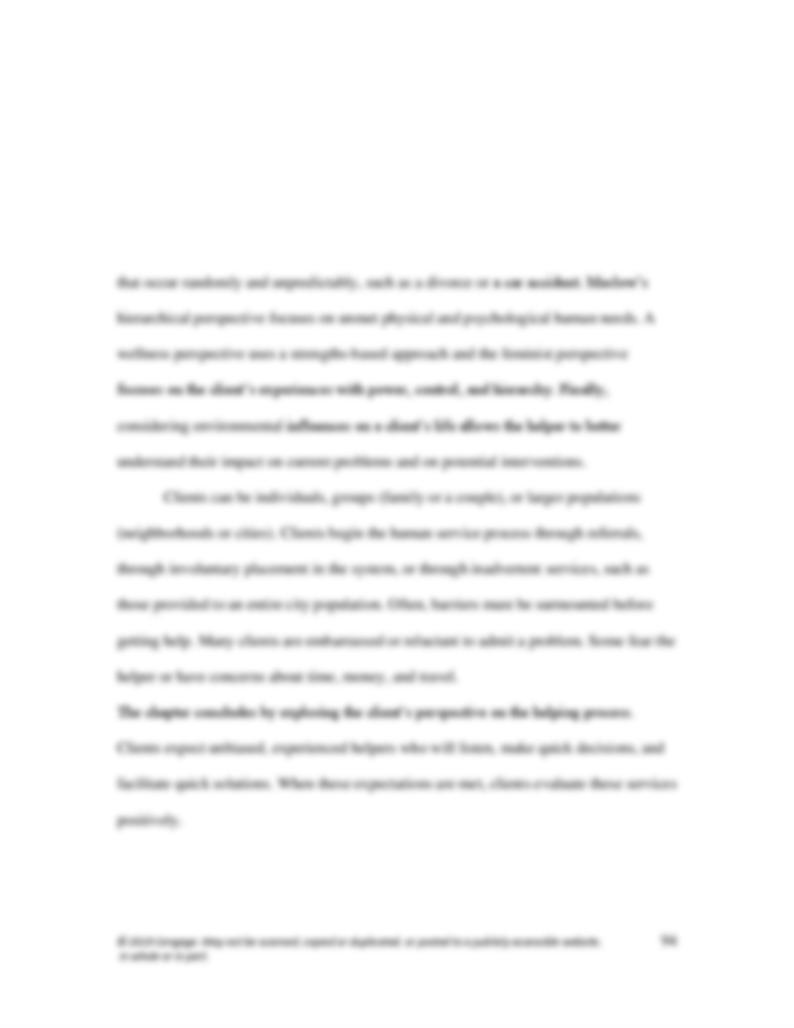
experiences, helpers are encouraged to use a “whole person” perspective to address all
aspects of a client’s needs.
A number of conceptual frameworks help us think about client problems. The
lifespan perspective deals with problems as life events, or those that clients encounter
during the human development process. The situational perspective deals with problems
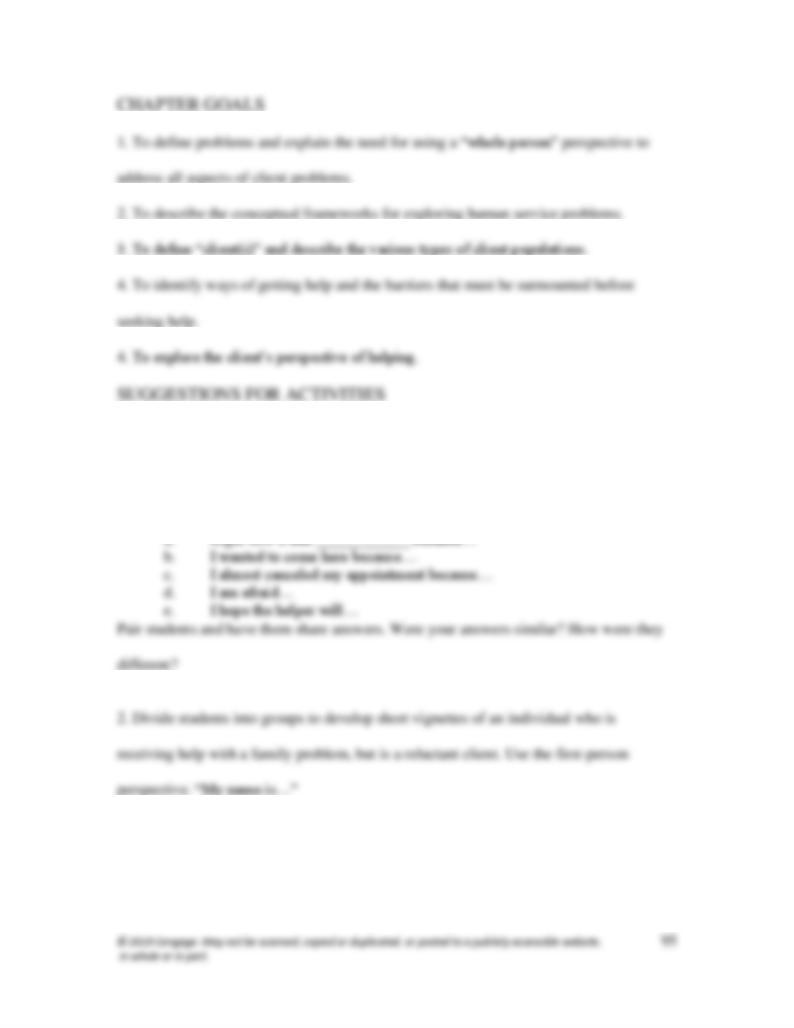
1. Ask students to assume that they are sitting in the reception area of an agency waiting
for their first appointment to see a helper. Then, have them answer the following
questions:
3. Assist students in understanding what it means to live in poverty by exploring the
limited choices that result from poverty. Divide the class into family-size groups. A
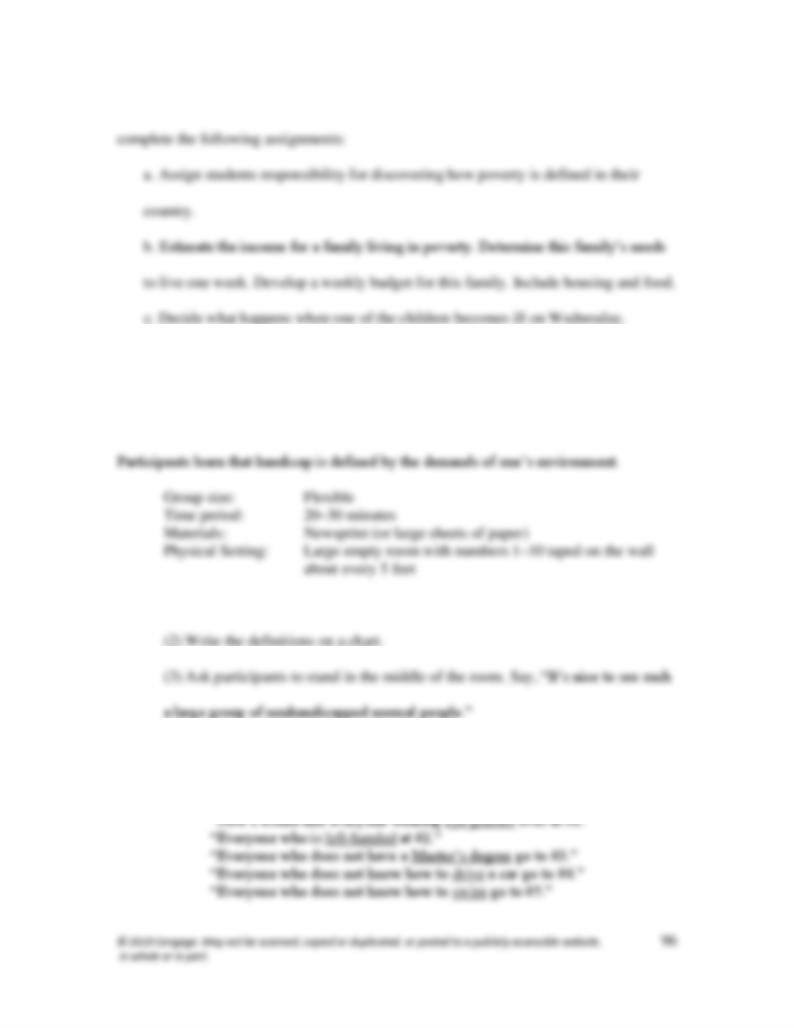
family of nine is the largest manageable size group for this activity. Have each group
4. Help students deal with general stereotypes associated with the word “handicapped”
and obtain a realistic definition of the word. This exercise provides the participants with
an opportunity to express new insight toward handicapped people as individuals.
(4) Read the following list and pause after each statement to allow participants
time to move to the appropriate location.
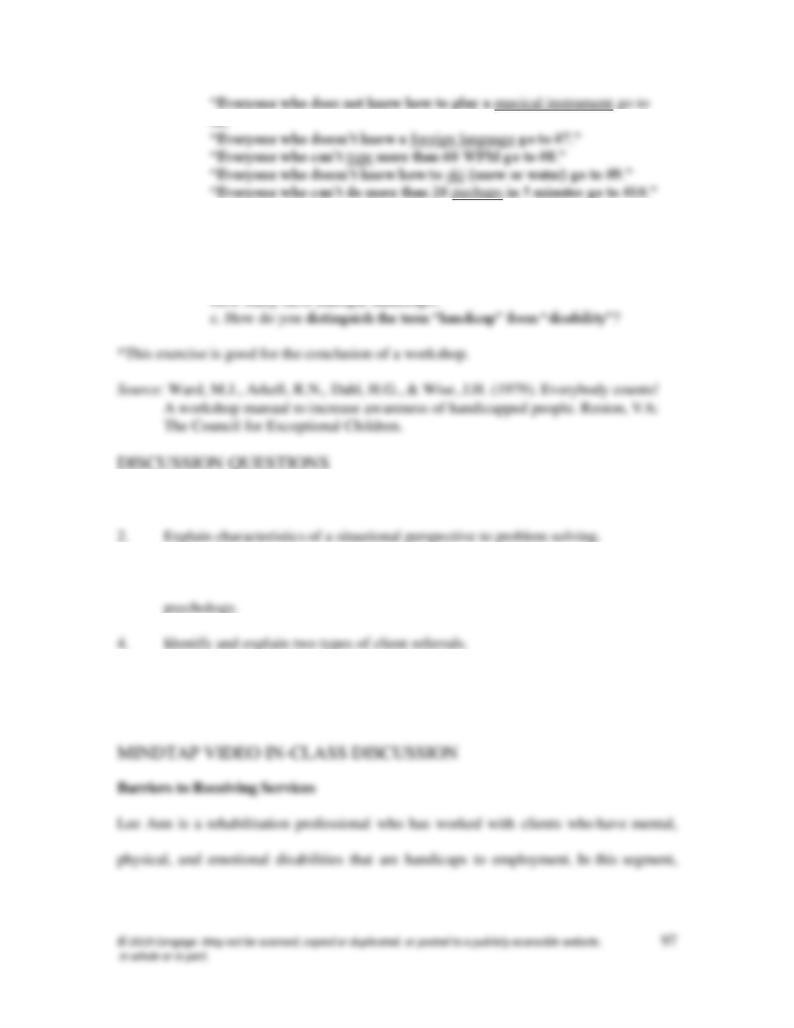
(5) Follow-up with these discussion questions:
a. Do you still want to keep the definition of handicap you wrote?
b. How many of you “normal” people were found to be handicapped?
1. How do “problems in living” expand a helper’s understanding of the client?
3. Who was Abraham Maslow? Describe his major contribution to the field of
5. Why would an individual’s perception of a human service professional act as a
barrier to obtaining help?
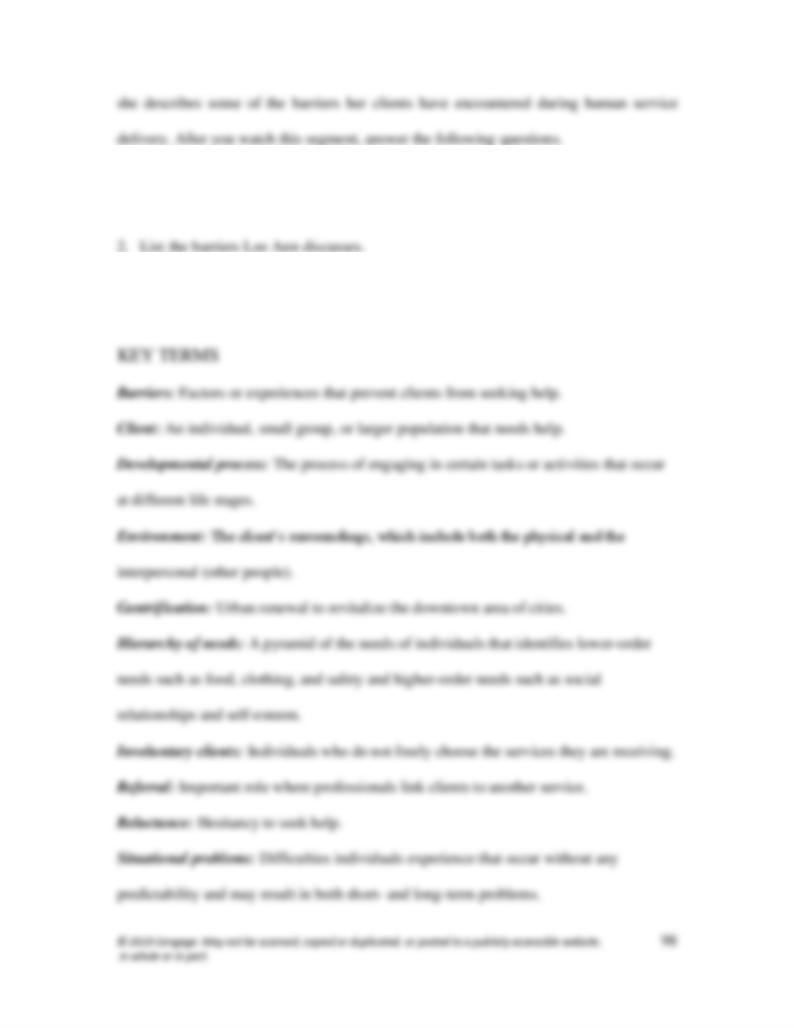
1. How do you think human service professionals themselves can become the problem
for the client?
3. How do these barriers affect service delivery?
4. What does Lee Ann think the most significant barrier is?
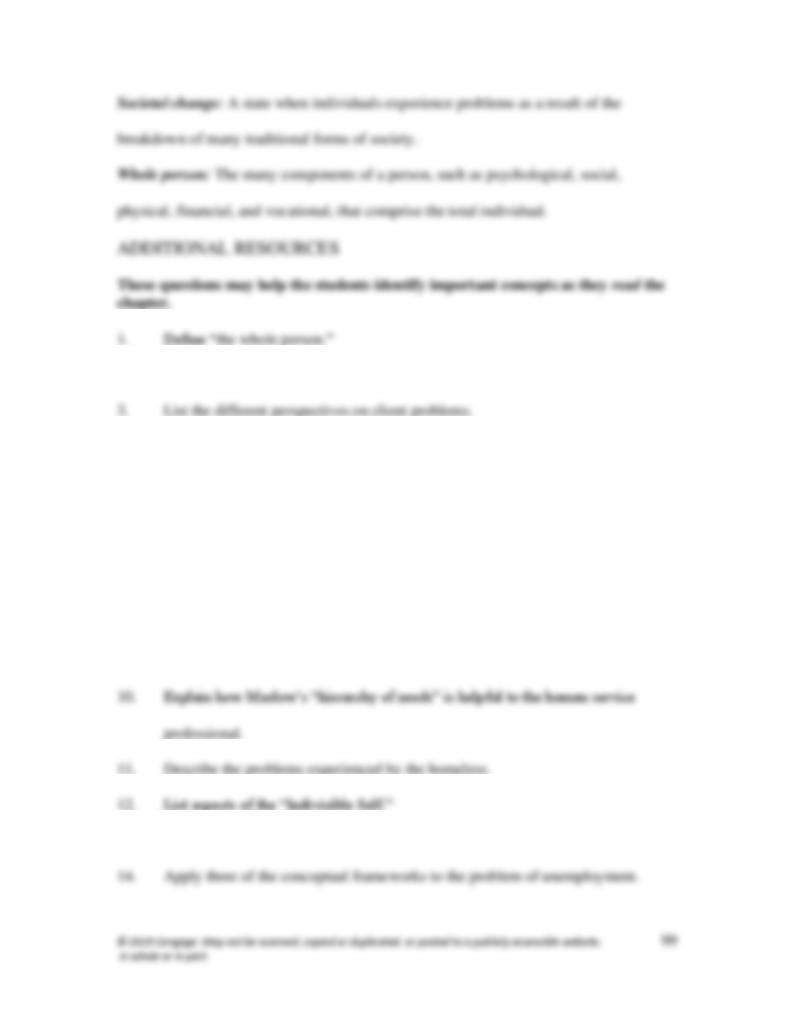
2. What are “problems in living”?
4. Why is it difficult to predict what clients will experience as problems?
5. What are the factors that make clients reluctant to seek help?
6. What happens if an individual does not develop at a particular stage?
7. How is the developmental model helpful to the human service professional?
8. How are “problems” defined from a situational perspective?
9. How do situational problems contribute to both short-term and long-term
difficulties?
13. What role do environmental influences play in client problems?
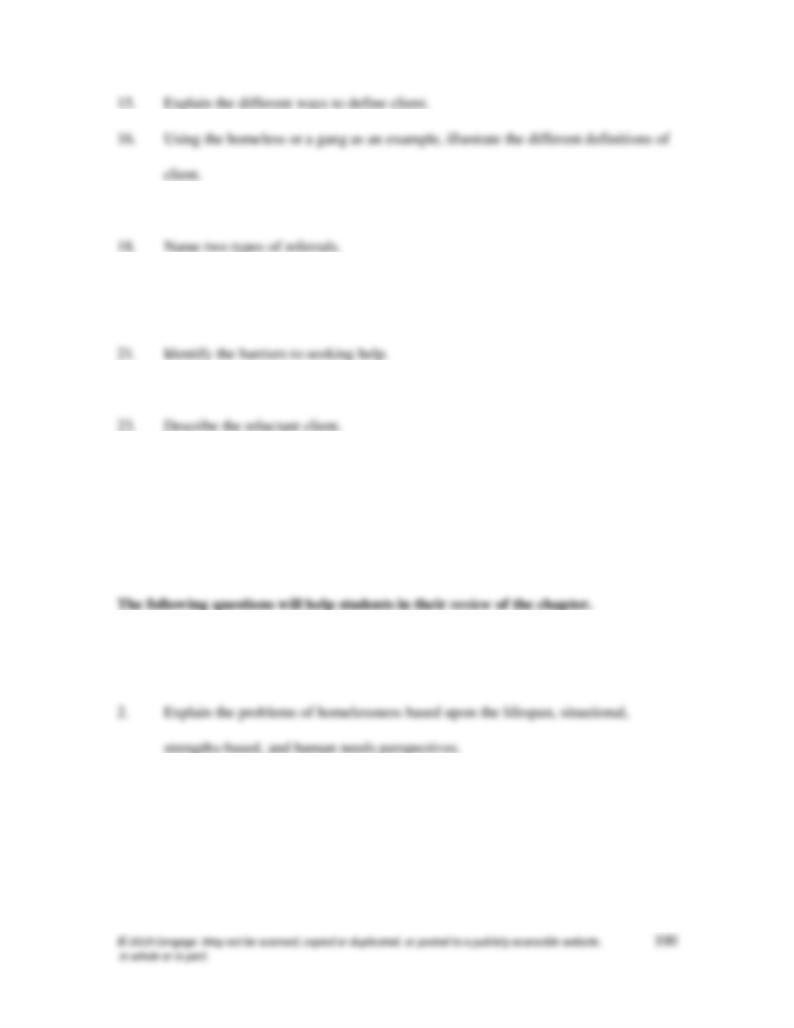
17. How does gang behavior contribute to the increase in violence and crime?
19. What is the job of the referring professional?
20. What types of clients are involuntarily placed in the human service system?
22. What are the psychological costs of seeking help?
24. What do clients expect from human services?
25. What do clients perceive as positive outcomes of human service delivery?
26. What determines client satisfaction?
27. What factors are linked to client dissatisfaction?
1. Think about the ways of categorizing problems. What are the strengths and
limitations of each categorization?
3. There are several ways that clients may receive help from the human service
delivery system. What problems are involved in each type of entry into the
system? In your opinion, what is the preferred way of entering the human service
system? Why?
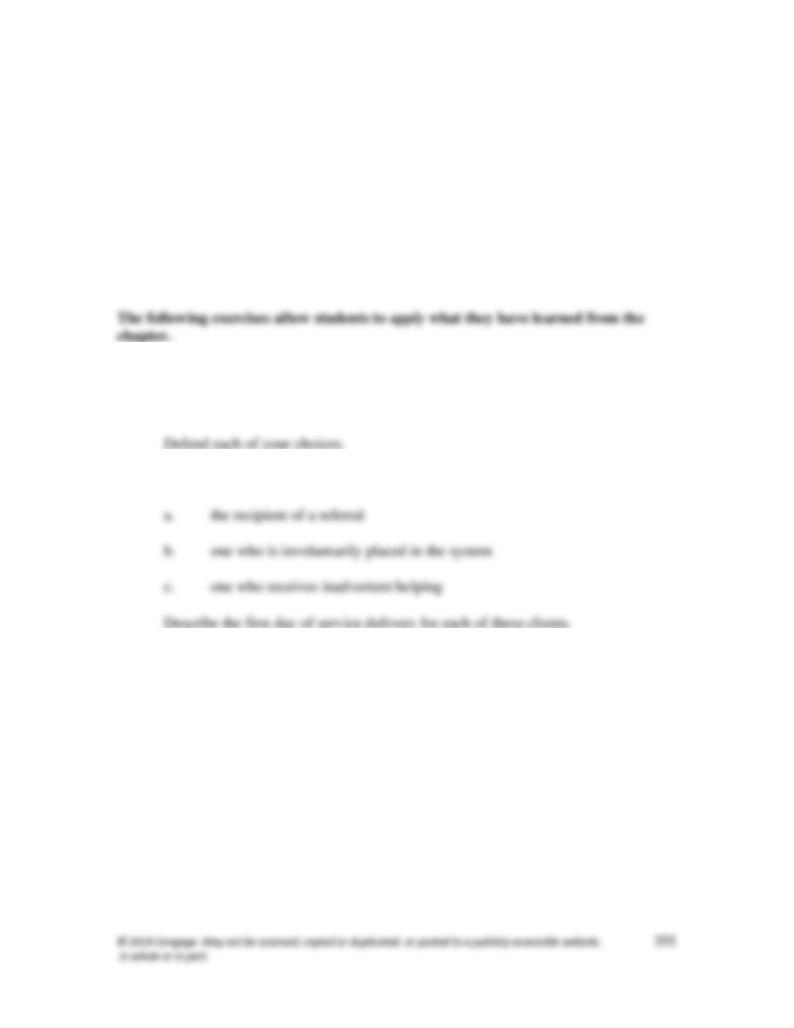
4. Clients experience many barriers to receiving services. List these barriers. How
would a human service professional counter each barrier?
5. Many clients are reluctant to enter or participate in the helping process. What are
the possible sources of this reluctance?
6. In your opinion, what are the most critical expectations that clients have of human
services? Defend your answer.
1. Make your own list of 20 problems that human beings experience. Which of these
problems are considered developmental, situational, human needs, social change?
2. Write a short story about these individuals:
3. If you were to receive services, list what you would expect from the helper and
the system. How would you evaluate the success of the services provided?
